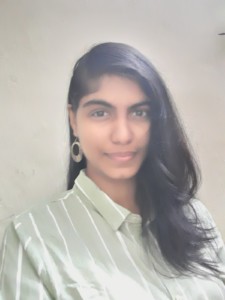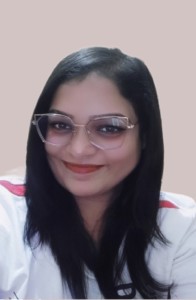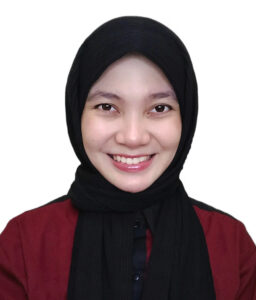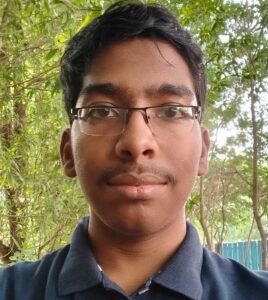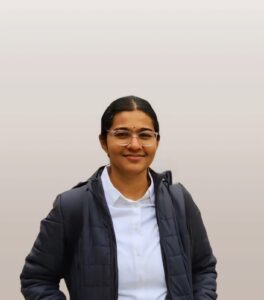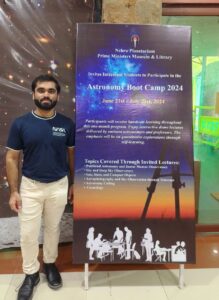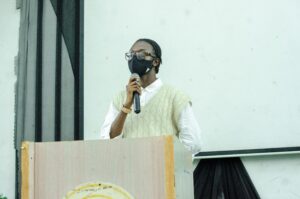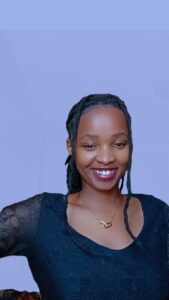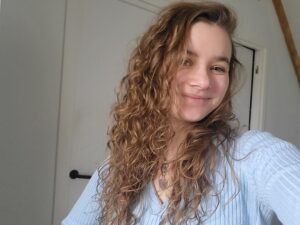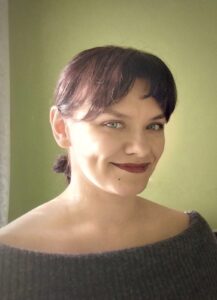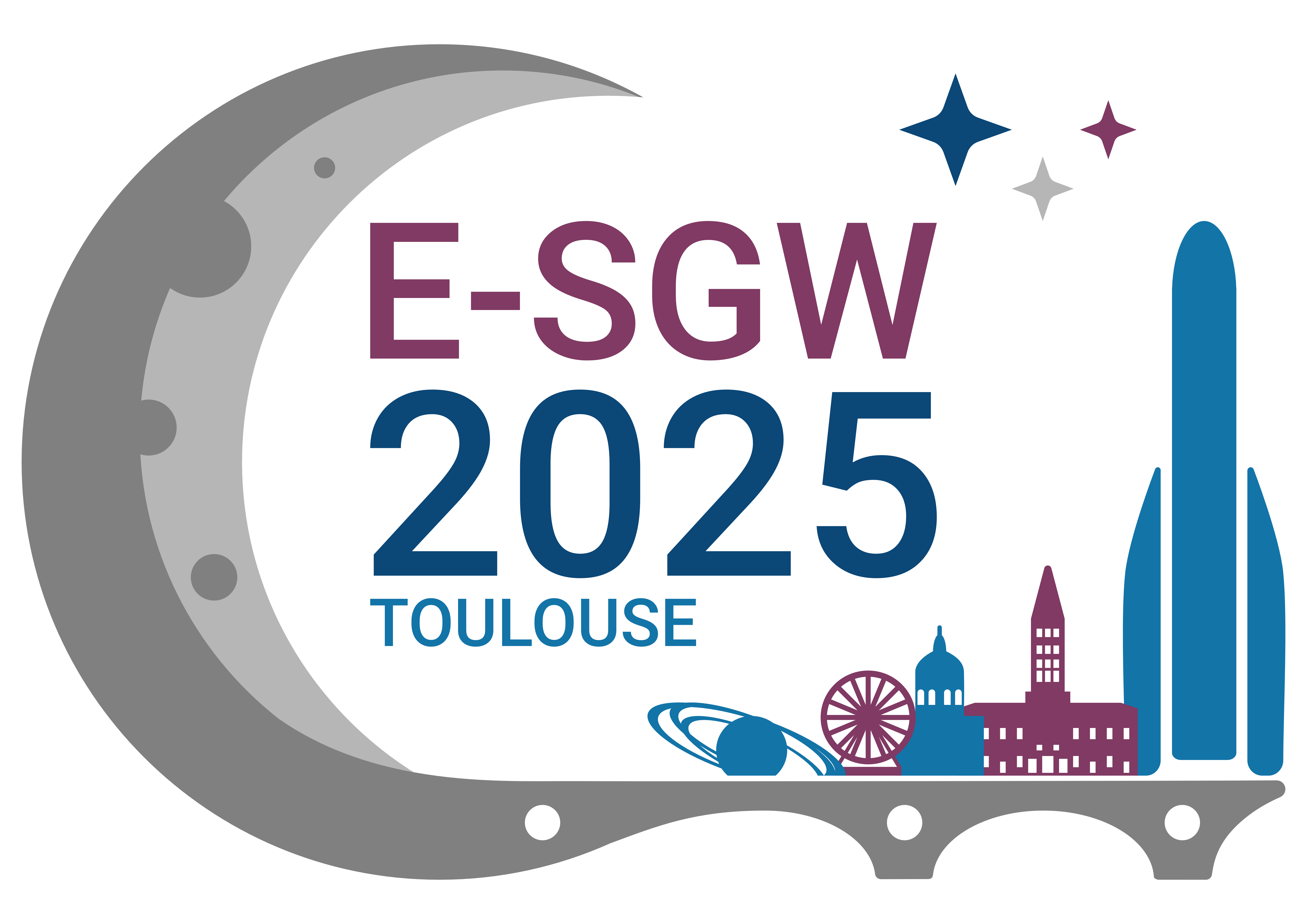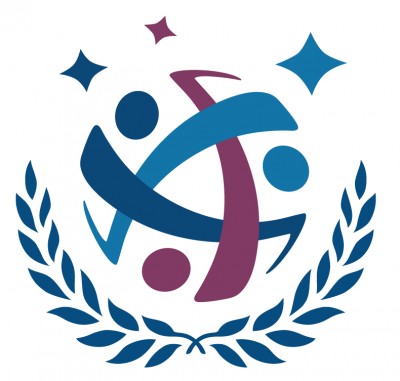Near Earth Object Project Group

Dhanisha is a Mission Design Engineer with a background in Aerospace Engineering. Her major areas of research are supersonic flows, trajectory designs and implementing sustainability in space. She enjoys volunteering at several organizations like WoAA (Women of Aeronautics and Astronautics), Moon Village Association and SGAC. Passionate about improving diversity in the space sector, she is an active part of various ally and support groups. She is also fond of reading and writing and has written various short stories and poems along with several technical articles.
Mahima Gehlot is an R&D Project Coordinator with an Aeronautical Engineering background. Her primary research interests are hypersonic flows, aviation and spacecraft design, and planetary defence. She also works as a citizen scientist for ESA’s CNS project. Her desire to become an astronaut is mirrored in her scientific work. She is an active climate change enthusiast who works for Greener is Cleaner as an article writer for a website and magazine and social media manager for the GiC India channel. She is an active volunteer for a variety of programmes run by the Society for Space Education Research and Development (SSERD) and SGAC. She enjoys reading and teaching others about the space sector.
Aakaash is a Bachelors (BTech) student majoring in Computer Science, specializing in Artificial Intelligence and Machine Learning. His academic journey is driven by a deep-seated passion for utilising the magic of Machine learning and image processing to explore the final frontiers. Looking towards the future, Aakaash is particularly interested in Geographic Information Systems (GIS) and envisions using GIS technology to advance space exploration and contribute to more efficient and insightful spatial data analysis.
His primary interests include astrophysics, planetary sciences, geophysics, climate change, oceanography and marine biology
Lorenzo Iacopino holds a BSc in Aerospace Engineering from the University of Pisa and an MSc in Aerospace Engineering with a Space Curriculum from the University of Bologna. These academic programs have strengthened his expertise in physics, mathematics, and fundamental sciences. His interdisciplinary education has allowed him to apply theoretical knowledge to practical challenges, collaborate effectively in team settings, and contribute to innovative projects.
With hands-on experience gained through internships and specialised programmes, Lorenzo has developed a strong foundation in space engineering. He is deeply passionate about space science and technological innovation. Outside of his professional pursuits, he enjoys hiking, stargazing, and surfing.
Chilla Sumana is a mechanical engineering graduate passionate about space exploration and astronomy. As a Software Engineer, she combines her technical expertise with her scientific curiosity, continuously expanding her knowledge across disciplines. Her involvement in various space-related working groups reflects her dedication to the field.
Beyond her professional pursuits, Sumana is a trained Carnatic vocalist and an amateur astronomer. Her enthusiasm for space has led her to volunteer with international astronomy projects, where she actively contributes as a member. She also had the privilege of participating in the European Space Agency’s (ESA) citizen science project, conducting a review study on space radiation effects on males and females.
Sumana enjoys observing the night sky, photographing celestial formations, and studying telescope mechanics in her free time. Her fascination with space technology and hands-on stargazing experiences fuel her passion for astronomy. With a multidisciplinary background and a relentless drive for learning, she continues to explore the intersections of engineering, software, and space science.
Anmol Gandhi is an aspiring theoretical astrophysicist dedicated to unravelling the mysteries of the universe through research and innovation. With a background as an information technology engineer, he bridges the gap between technology and astrophysics, leveraging his technical skills to advance space science. He is the author of Starbirth to Stardust: A Celestial Biography, a book that makes the complex life cycle of stars accessible to a wider audience.
Among his key achievements, Anmol had the opportunity to present his Moon Colony project to ISRO Chairman Dr. S. Somanath, showcasing his visionary thinking in space exploration. He also participated in the astronomy camp at Nehru Planetarium, where he deepened his knowledge of astrophotography, stellar evolution, and cosmology. Further expanding his expertise, he completed the CERN Particle Physics course and the NASA TOPS program, enhancing his understanding of high-energy physics and collaborative scientific research.
Anmol is engaged in independent astrophysics research and preparing to publish his first academic paper. Passionate about science communication, he actively participates in outreach initiatives to inspire others about the wonders of the cosmos. In his free time, he enjoys sketching celestial scenes, reading about space exploration, and stargazing, reflecting his deep fascination with the universe. His multidisciplinary approach and relentless curiosity drive his mission to push the boundaries of astrophysical discovery.
Bamiyo Dada Olaoye is a multidisciplinary professional with expertise in Telecommunication Engineering, transport management technology, and artificial intelligence. With a visionary outlook, he often quips, “It’s cool to retire to Mars after working on Earth,” reflecting his passion for space exploration and futurism.
As an educator, Bamiyo is dedicated to making space technology accessible—teaching in both English and his native dialect to diverse audiences, fostering inclusivity in STEM. He is an active contributor to the Space Generation Advisory Council (SGAC), where he collaborates with global teams to advance its mission in supporting the next generation of space leaders.
Beyond his technical pursuits, Bamiyo is driven by innovation and teamwork, striving to bridge gaps between cutting-edge technology and practical applications.
Fuad (Aliphatic) Adegoke is an experienced engineering manager passionate about technology and innovation. With a strong background in Software Engineering and Product Management, he has led cross-functional teams across diverse industries, including fintech, edtech, spacetech, and Web3, driving impactful solutions and scalable products.
Beyond his technical leadership, Fuad is dedicated to fostering collaborative and inclusive work environments. As an active open-source mentor, he enjoys sharing his expertise and empowering the next generation of technologists, helping them grow in their careers.
Outside of his professional work, Fuad is fascinated by the intersection of technology and creativity. He has a deep interest in art, gaming, and space exploration and often explores how these fields converge with cutting-edge innovation. His multidisciplinary mindset fuels his curiosity and drives his commitment to shaping the future of tech.
Felistus Macharia is a microbiologist-turned-space scientist passionate about planetary defence, space sustainability, and astrobiology. As the Partnership Coordinator for the Space Generation Advisory Council (SGAC) Near-Earth Object (NEO) Project Group, she spearheads collaborations to advance research on asteroid detection, impact mitigation, and space debris solutions—including innovative approaches like nanotechnology and swarm-based satellite systems.
A fierce advocate for inclusive science, Felistus is dedicated to democratising space exploration, particularly in Africa, where she champions youth-led innovation. Her interdisciplinary background allows her to bridge gaps between biology, space tech, and policy, driving projects that protect Earth while expanding humanity’s cosmic footprint.
Beyond her research, she’s a storyteller, breaking down complex space science for broader audiences. Whether analysing microbial life in extreme environments or designing orbital sustainability strategies, Felistus embodies the spirit of “science for all”.
Fun fact: She’s probably gazing at the stars or brainstorming how to save them.
Quincy Van Haasteren is an applied sciences student passionate about uncovering life’s mysteries on Earth and beyond. Currently building a strong foundation in scientific research, she plans to specialise in microbiology, which is driven by a fascination with astrobiology and the potential for extraterrestrial microbial life. Her academic journey reflects a deep curiosity about the extremes where life might thrive, from Earth’s harshest environments to distant planets.
When not in the lab or classroom, Quincy embraces the outdoors. An avid archer, she enjoys the discipline and focus of the sport. On clear nights, she swaps her bow for a telescope, often lost in stargazing sessions that fuel her wonder for the cosmos.
With a blend of scientific rigour and adventurous spirit, Quincy is charting a path toward answering one of humanity’s oldest questions: Are we alone in the universe?
Victoria Kolesnichenko is an astronomy communicator, media scholar, and marketing master’s student at LUMSA University, where she researches the power of metaphors in space journalism. With a flair for creative science storytelling, she bridges the gap between complex cosmic concepts and public imagination—once even writing a column on extraterrestrial life packed with delicious analogies (Jupiter’s storms = cappuccino foam, anyone?).
As a passionate advocate for accessible science, Victoria joins the NEO Project Group (NEO-PG) to amplify the urgency of planetary defence and near-Earth object research, including sample return missions. She thrives on translating cutting-edge science into narratives that spark curiosity and action.
Off-duty, she’s a multifaceted explorer: capturing the world through her camera on long walks, unearthing history at archaeological digs, or unwinding to heavy metal—proof that science and soul can (loudly) coexist.
Inspired by Carl Sagan but with her twist, Victoria believes the universe is best understood—and defended—through stories that resonate.

